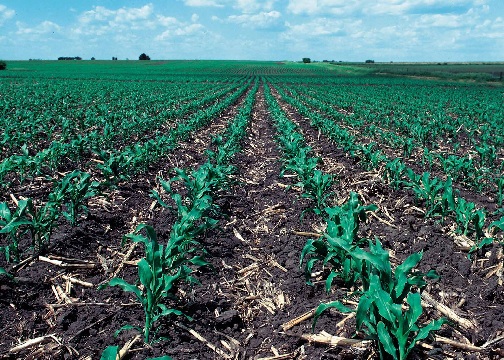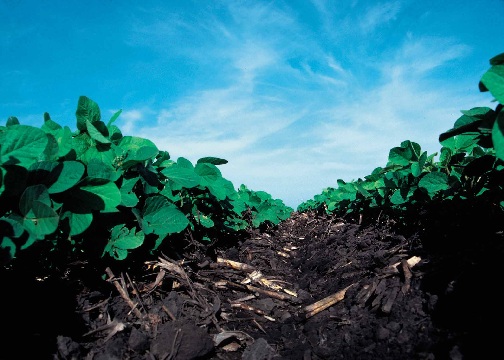Competency Area 5: Soil conservation AEM
PO 49. Describe the basic components and workings of tillage systems, and understand their agronomic and environmental benefits.
- Plow-till
- No-till
- Mulch-till
- Ridge-till
- Zone tillage
Mulch-till.
A type of conservation tillage which includes a form of field-wide tillage which leaves more than 30% crop residue cover after planting. Common tillage tools used with this system are chisel plows, disk harrows and field cultivators. Erosion control is much better than that obtained with moldboard plowing due to the increased mulch cover, but not as great as that obtained with no-tillage. Organic matter content is typically higher than with plow-till, but lower than with no-till. Mixing of manure and urea fertilizers is usually sufficient to reduce ammonia volatilization (if done quickly after application) and odor nuisance.

Mulch-tillage
Photo courtesy of NRCS
http://photogallery.nrcs.usda.gov
Ridge-till.
A tillage system in which no tillage is done from harvest until planting, except for nutrient injection. Crops are grown on preformed ridges. The ridges are usually formed in the previous crop with in-row cultivators. Ridge tillage is a way to reduce use of in-crop herbicide inputs, and it is a form of precision traffic because all traffic takes place between rows. Manure is typically not incorporated, which increases ammonia volatilization losses and odor nuisance. Organic matter content is typically similar to mulch-till systems, and erosion control is good due to the high residue cover after planting. All crops need to be planted on the same row-spacing, and equipment needs to be redesigned to run between the ridges.

Soybeans growing in a ridge-tillage system
Photo courtesy of NRCS
http://photogallery.nrcs.usda.gov
Zone tillage.
A system that is similar to no-tillage, except zones are formed either during planting or previous to planting. The major benefit of zone tillage over no-tillage is the faster emergence of early planted summer crops such as corn. Zone tillage takes more tractor power, and equipment costs are higher than with no-tillage. Erosion control is excellent.
(Go to: ftp://ftp-fc.sc.egov.usda.gov/IA/intranet/Tillage.pdf to see tillage equipment)
Quick Links
- Competency Area 1: Basic soil properties
- Competency Area 2: Soil hydrology AEM
- Competency Area 3: Drainage and irrigation AEM
- Competency Area 4: Soil health and compaction
- Competency Area 5: Soil conservation AEM
- Competency Area 6: Watershed hydrology AEM
- Competency Area 7: Non-point source pollution AEM
- Competency Area 8: Concentrated source pollution AEM
- Competency Area 9: Conservation planning AEM
